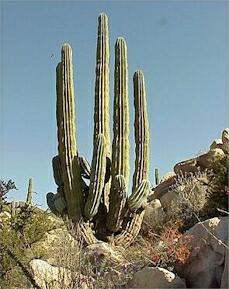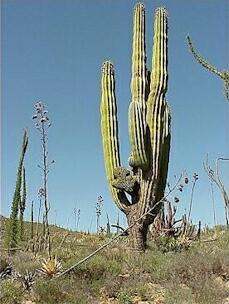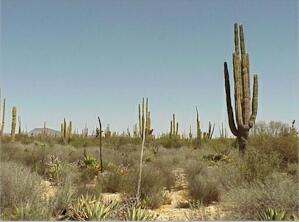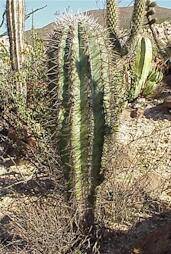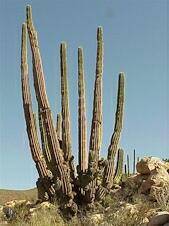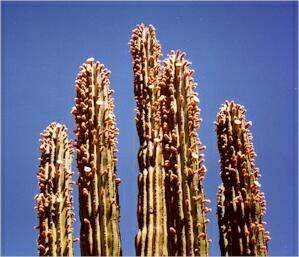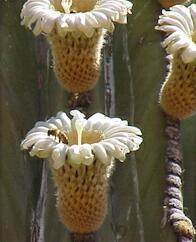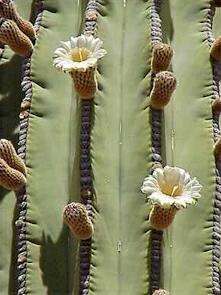CARDON (Pachycereus
pringlei) The giant cardon cactus dominates many of the deserts of Baja California and the coastal region of the state of Sonora in Mexico. It is closely related to the saguaro (Carnegiea gigantea) of Arizona and Sonora, but is not frost-tolerant, so these two giant cacti occupy distinct geographical regions. Cardon is the larger of these two cacti. In fact it is the largest cactus in the world - specimens sometimes might reach 200 years of age, with a height of up to 20 metres. In comparison with the saguaro, cardon tends to form multiple branches quite close to the base, so the plants often have a number of long, straight, vertical arms. Mature cardons can either be found in mixed communities with other large plants such as boojum trees, or can form cardon "forests" (cardonals) that dominate the landscape. The trunk and main branches of cardon have from 11 to 17 vertical ribs. On young plants the spines can be very conspicuous, but they are lost with age and are not replaced.
The lower parts of older plants develop a "corky", cracked, woody base as the outer succulent tissues begin to decay. Eventually, the plants die and their internal woody "skeleton" is then evident - a complete cylinder of woody tissue at the base, and vertical woody ribs running up the length of the stem.
In spring, cardons produce a large number of flower buds on the ribs at the tips of the older branches. The buds give rise to a succession of large blooms, each of which remains open for only about 24 hours, but the period of flowering can last for 3-4 weeks because the buds mature at different times. The flowers are visited by bats at night and by bees during daytime.
Go
to Cactus gallery? |
